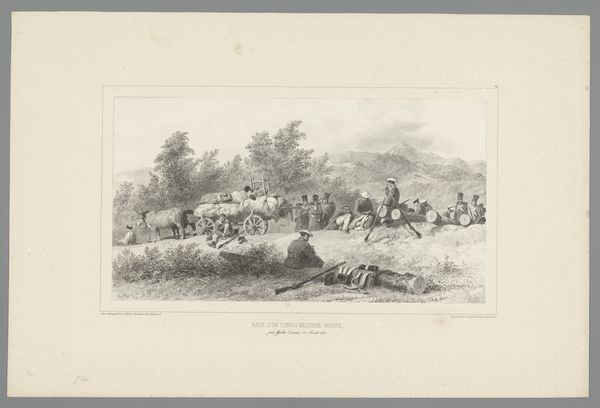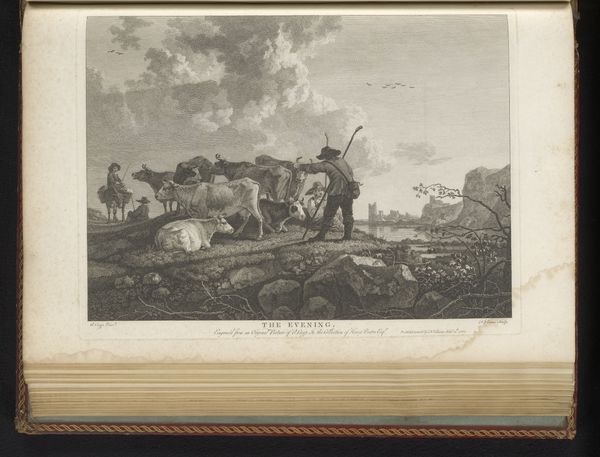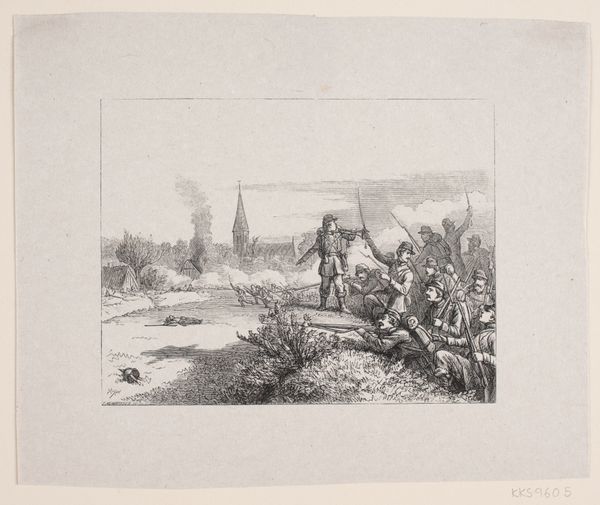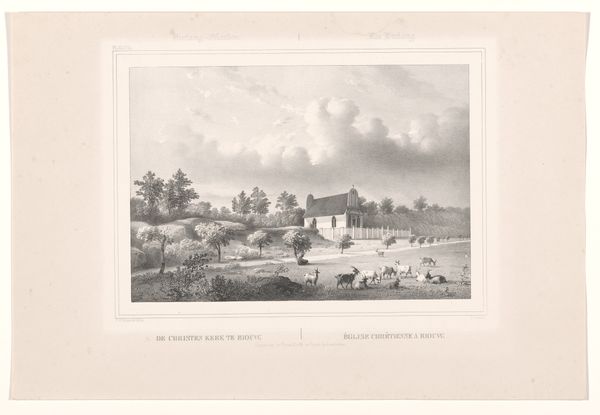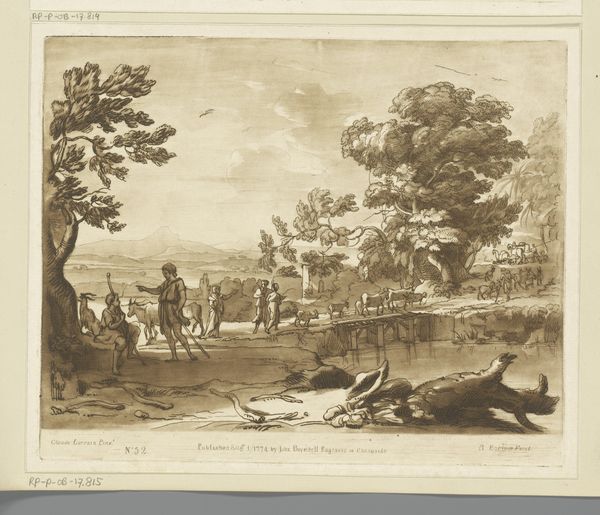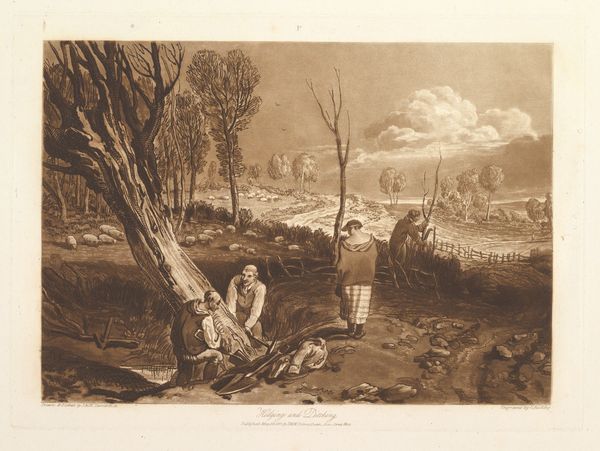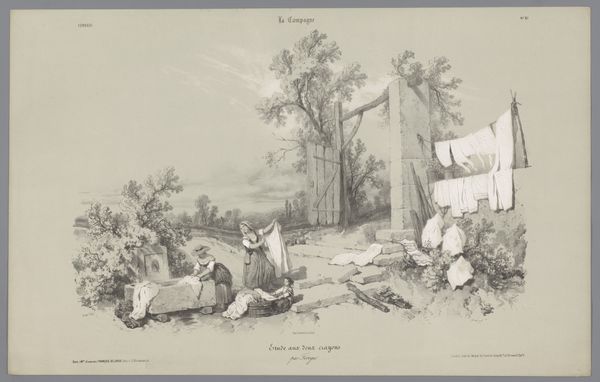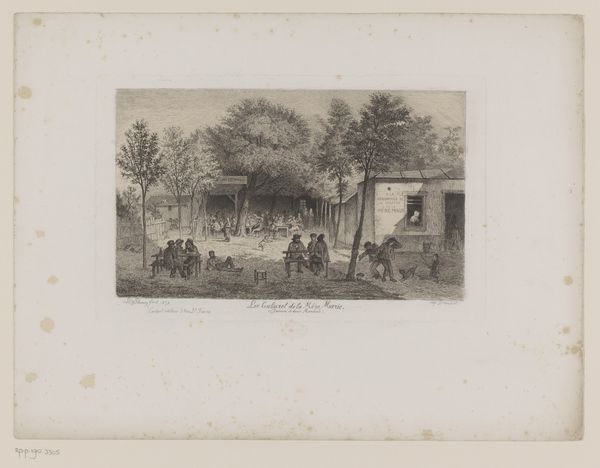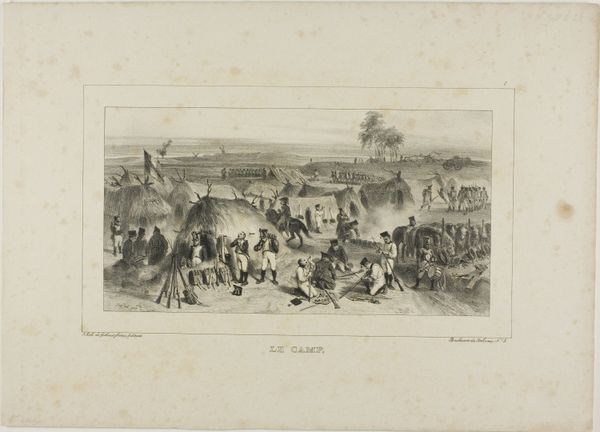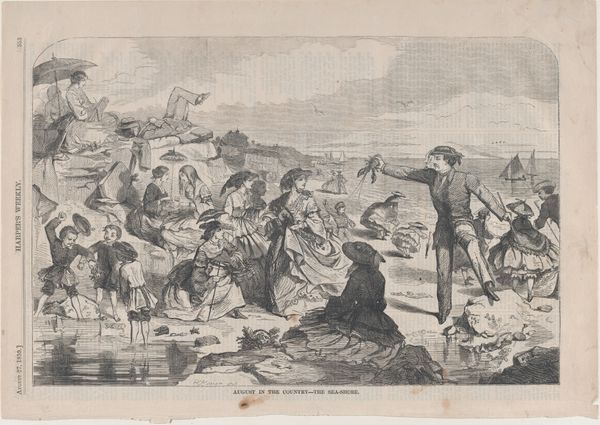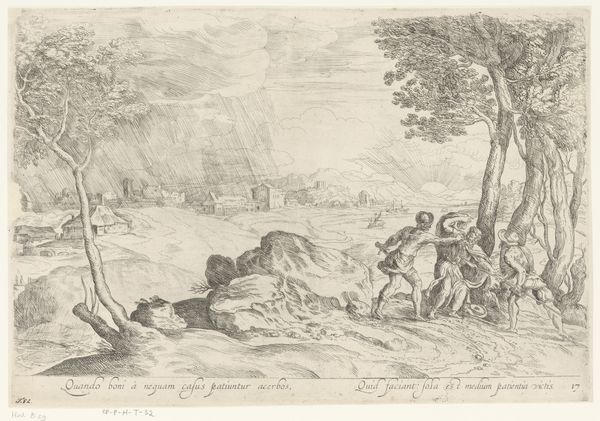
lithograph, print
#
lithograph
# print
#
landscape
#
history-painting
#
realism
Dimensions: 286 mm (height) x 400 mm (width) (billedmaal)
Curator: What strikes me first is the utter weariness. There's a vulnerability in the slump of each body in Adolph Kittendorff's "Feltvagt ved Hammelev i det Slesviske 1848". A print, a lithograph, from the 1880s, depicting a scene of soldiers resting, utterly exhausted by the Schleswig War. Editor: Yes, I’m drawn to the depiction of labor here, the soldiers' toil rendered in the very texture of the lithograph. Notice the grainy quality – a consequence of the material processes used to produce this print. How those exhausted bodies were drawn and transferred and reproduced. It highlights the material reality of war and its impact. Curator: Precisely. The Schleswig War was, and continues to be, such a touchstone for Danish identity. Look how Kittendorff has staged this moment. The resting soldiers almost merge into the landscape. We have the single soldier on patrol in the distance but everyone is spent. There is this immediate dialogue with broader narratives about national identity, patriotism and masculinity, that the lithograph brings up. But for whom? Editor: Consider the accessibility the lithograph format provided. Multiple impressions could be made. This image could reach a wider audience beyond the elite circles, informing public perception of the war, shaping collective memory. We cannot escape the means of its production and reproduction to have this kind of socio-political effect. Curator: It certainly begs the question – what exactly *is* Kittendorff attempting to convey about war? We often focus on the glorification, but here... We have the fatigue, and maybe, even the pointlessness? The scene suggests the futility of armed conflict through the slumped postures of those who actually perform it. I think that's especially subversive in light of the nationalist fervor surrounding the war. Editor: I agree, but there’s an elegance and dignity, as the means of production have allowed such soft shading and detailed lines, but as we've discussed, let's not forget the machinery that allows this vision. Its form reinforces the ideas and values within the print. The labor, materials, and the very act of distribution are the point here, for it creates the audience for it. Curator: That's such an interesting perspective. Looking at it that way offers a deeper understanding of how this artwork participates in, and comments on, historical and political narratives. Editor: Right, seeing beyond the depicted scene, the materiality reveals the true labor of shaping a nations self-perception, doesn’t it?
Comments
No comments
Be the first to comment and join the conversation on the ultimate creative platform.
